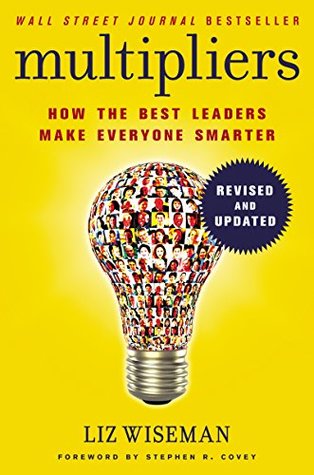More on this book
Community
Kindle Notes & Highlights
by
Liz Wiseman
Read between
June 2 - June 4, 2023
“There are risks in every action. Every success has the seed of some failure.”
Multipliers have a core belief that people are smart and will figure things out.
His signature remark was, “I can’t believe you haven’t figured this out.”
Emergent problems and big hurdles are irresistible bait for Diminishers. They see these shiny objects and are attracted. They are fascinated by the intellectual challenge to solve the problem. They are lured by the attention and kudos they get for saving the day.
The cost of the Micromanager is that organizations cannot grow beyond them and struggle to leverage the other intellect inside the organization.
While some CEOs are addicted to praise, this leader is addicted to growing other people. A Multiplier to his core, he recognized that his greatest value was not in his intelligence but in how he invested his intelligence in others.
Unexpected Findings 1. Multipliers do get involved in the operational details, but they keep the ownership with other people. 2. Multipliers are rated 42 percent higher at delivering world-class results than their Diminisher counterparts.4
We judge others by their doings, but ourselves by our intentions. EDWARD WIGGLESWORTH
We all have Accidental Diminisher moments. The secret to the Multiplier effect is knowing what your vulnerabilities are, spotting them in action, and turning these situations into Multiplier moments.
He is a good manager and a decent person, the type of leader who doesn’t like to see people struggle, make avoidable mistakes, or fail. At the first sign of distress, he jumps in and helps. Occasionally, he swoops in with a big, heroic rescue. More often than not, he simply lends a hand, resolves a problem, and helps people across the finish line. Incidentally, we find that this is the most common way leaders accidentally diminish.
As leaders, sometimes we are most helpful when we don’t help.
As leaders, sometimes the faster we run, the slower others walk. When leaders set the pace, they are more likely to create spectators than followers.
How might I be diminishing you?
It is never wise to go head-to-head with a headstrong person, especially the boss. My research showed that a frontal attack, such as trying to prove the merits of one’s ideas, only accelerated the death spiral (you might recall that confrontation is the most used yet least effective approach). Even when you win, the victories are usually pyrrhic.
Second, remember that if you are constantly surrounded by Diminishers, at some point you have to ask yourself, “Is it me?” You might be taking things too personally, reading malice into otherwise well-intended criticism or even looking for insults in compliments. It might be time to see your Diminishers as Accidental Diminishers, leaders with good intentions. Or you may have to admit that you are diminishing in the other direction—upward. The remedy in all cases is the same: be a Multiplier, down, out, and up.
Dr. Martin Luther King Jr. famously said: The ultimate weakness of violence is that it is a descending spiral, begetting the very thing it seeks to destroy. Instead of diminishing evil, it multiplies it. . . . Returning violence for violence multiplies violence, adding deeper darkness to a night already devoid of stars. Darkness cannot drive out darkness: only light can do that.
Breaking the Cycle of Diminishing 1. It’s not necessarily about you 2. Diminishing isn’t inevitable 3. You can lead your leader
When I let go of what I am, I become what I might be. LAO TZU
In 2002, Jack Zenger and Joe Folkman published a set of fascinating research findings in their book The Extraordinary Leader.1 They studied 360-degree assessment data for eight thousand leaders, looking for what differentiated the extraordinary leaders from the average leaders. They found that leaders who were perceived as having no distinguishing strengths were rated at the thirty-fourth percentile of effectiveness of all leaders in the study. However, when a leader was perceived as having just one distinguishing strength, his or her effectiveness shot to the sixty-fourth percentile. Having
...more
A common misconception in executive coaching is that coaching or development can—or even should—turn your weaknesses into strengths. Clients have often told me, “I’m terrible at this, and I need to become really great at it.” I suggest to them that, while not impossible, it is unlikely they will turn their biggest weaknesses into their biggest strengths. The truth is that you do not need to be fabulous at everything. You just can’t be bad. You need to neutralize the weakness and move it into the middle, acceptable zone.
Multipliers and take the Accidental Diminisher quiz (which you can find at www.multipliersquiz.com).


